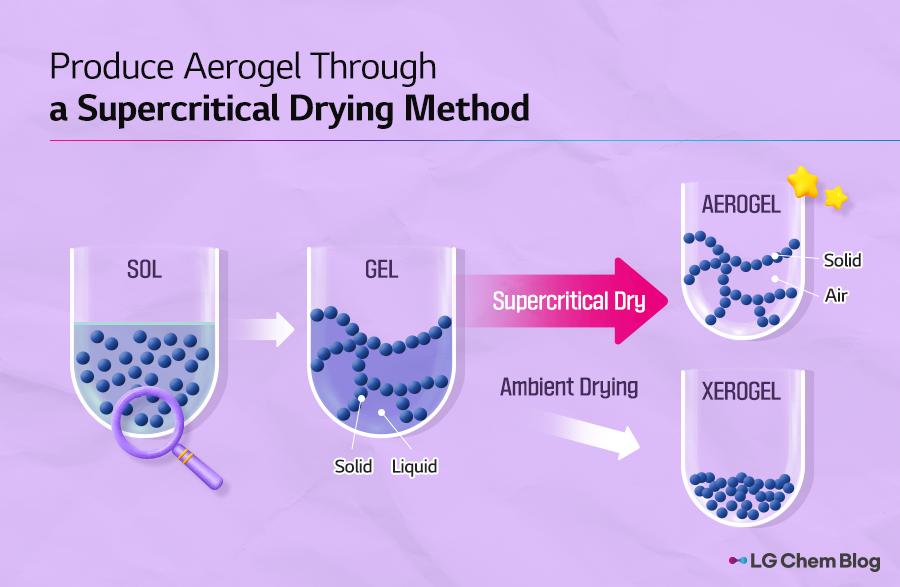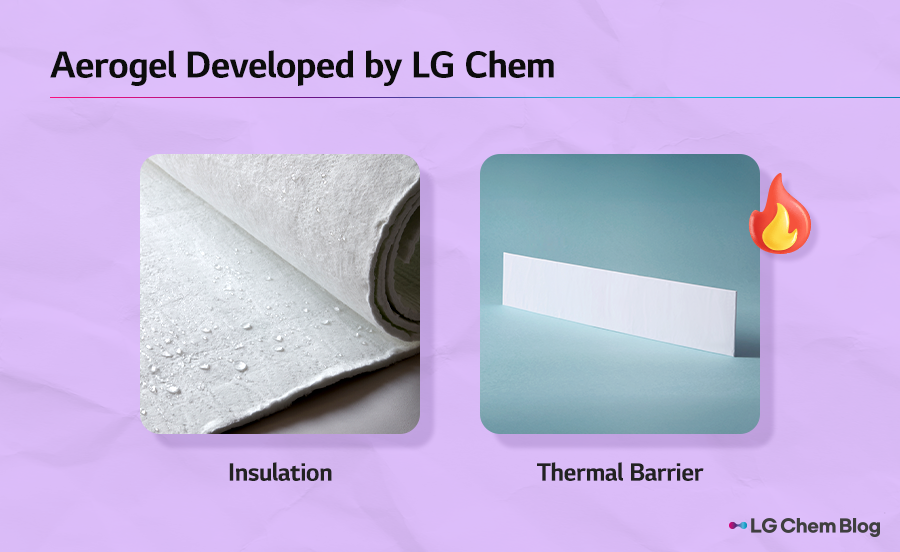FOCUS ON: Aerogel
2024. 03. 29
2024. 03. 29
Have you heard of the lightest solid in the world – Aerogel? Today’s ‘FOCUS ON’ zooms into Aerogel, gaining attention as a next-generation material!

Composed of over 95% air, aerogel enjoys the fame of being the lightest solid in the world. It consists of silicon dioxide (SiO₂, silica) 1/10,000 the thickness of a string of hair. Thanks to its nano-structure which resembles tangled string, aerogel can withstand 2,000 times its own weight and over 1,000℃ of heat, turning it into an excellent soundproofing and insulating material. Aerogel’s light yet strong properties enable it to bear extreme conditions, thus it is often used in building spacecraft, spacesuit, and arctic clothes. These days, its demand is rising to be used as a thermal shielding material in EV batteries.

The term aerogel is a compound word of ‘Aero (air)’ and ‘Gel (solidified liquid).’ In order to produce aerogel, we must create a silicon dioxide (SiO₂, silica) gel that combines oxygen and silicon.
The gel obtained from this process is similar to jellies that we commonly enjoy. Like jellies, gel has the shape of a solid, yet its inside is composed of liquid. To get rid of this liquid, it is required to take the ‘Supercritical Drying’ method. Unlike evaporation or other drying methods, the interfacial tension of supercritical drying is close to zero (0), which allows removal of liquid without damaging the structure.
*Interfacial tension: The tension between two substances with a different state (solid, liquid, and gas) that tends to contract the area of the interface
Once you put gel, which includes liquid (solvent), in a pressure vessel and let flow supercritical* carbon dioxide that is in a high-temperature and high-pressure state, the liquid (solvent) within the gel is replaced with carbon dioxide. Then, as you gradually lower the pressure, the carbon dioxide evaporates in a gas form, letting the air in the atmosphere enter. This produces porous aerogel with over 95% of porosity.
*Supercritical: The state of a substance which exists under the temperature and pressure that exceed the critical point where liquid and gas are separated

LG Chem has developed aerogel based on their proprietary technology, which is divided into high-and-low temperature industrial aerogel blankets and thermal barriers for EV batteries. LG Chem’s aerogel is used in the pipes and facilities of industrial sites as a thermal insulating material to minimize loss of heat and block battery thermal runaway.
LG Chem intends to invest a total of $238 million (KRW 310 billion) by 2024 to construct Korea’s first supercritical pyrolysis and aerogel plants in Seongmun Industrial Complex, Dangjin, South Chungcheong Province, Korea. The construction site is expected to stretch across 240,000㎡ (equivalent to 32 soccer fields), becoming the home-ground for their eco-friendly future business. (See related content: Beginning construction of pyrolysis oil and aerogel plant!)
Prospects are that the aerogel market will grow at an average of 30% per year, with rising demand for transportation∙storage of eco-friendly energy (liquid hydrogen) and thermal shielding materials. The demand for industrial thermal insulating materials (space, mobility, energy, battery, etc.) are also increasing, making aerogel a more promising next-generation material. With completion of the aerogel plant in Dangjin, LG Chem plans to step up as the global mecca of eco-friendly materials and lead the universal objective – sustainable development and carbon neutrality.

There are no comments yet! Be the first to let us know your thoughts!